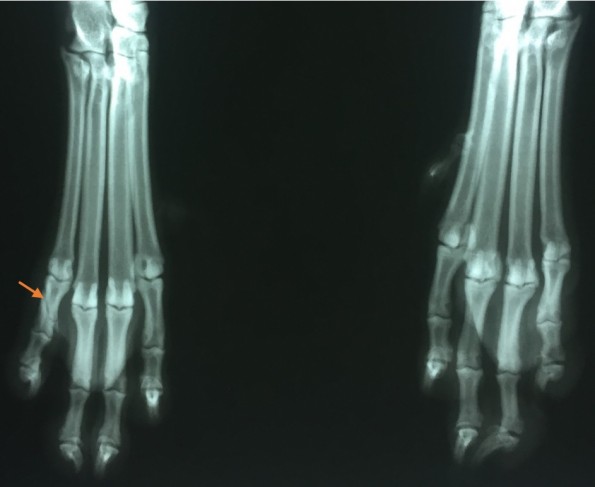
This week’s patient is a young and active large mixed breed dog. This dog’s dedicated owners frequent outdoor spaces where they can allow her to run and play to her heart’s desire.
One evening after throwing her ball up into the air, she jumped high to catch it, but seemed very uncomfortable with the landing. She immediately began to turn toward her right hind leg and did not want to put any weight on the paw.
As I have written about in the past, the most common hind leg injury we see in dogs is a rupture of the cruciate ligament. As I watched this pooch hobble into the exam room, I was immediately concerned about this injury.
However, on her exam, the knee was not swollen. She allowed flexion and extension of the knee without protest. I moved to her paw exam and after manipulating each toe, found the 5th digit to be very painful.
To determine if she had fractured the toe or simply injured soft tissue structures around it, she was admitted for x-rays. Because of the awkward ways we need to position dogs for this procedure, a sedative was administered.
The x-rays confirmed my concern: the toe was fractured (see the image – the red arrow points to the fractured bone).
Toe fractures are somewhat common in active dogs and can take a significant amount of time to heal. This is because it is difficult to stabilize the bone as the patient walks around. In most cases, the paw is bandaged and splinted until the patient can use the paw comfortably again and then we remove the splint and allow a gradual return to activity. Pain medications are used to control the initial soreness.
We wish our patient comfort and success as she recovers from her toe fracture and eventually returns to her active lifestyle (maybe with a little less jumping!).



